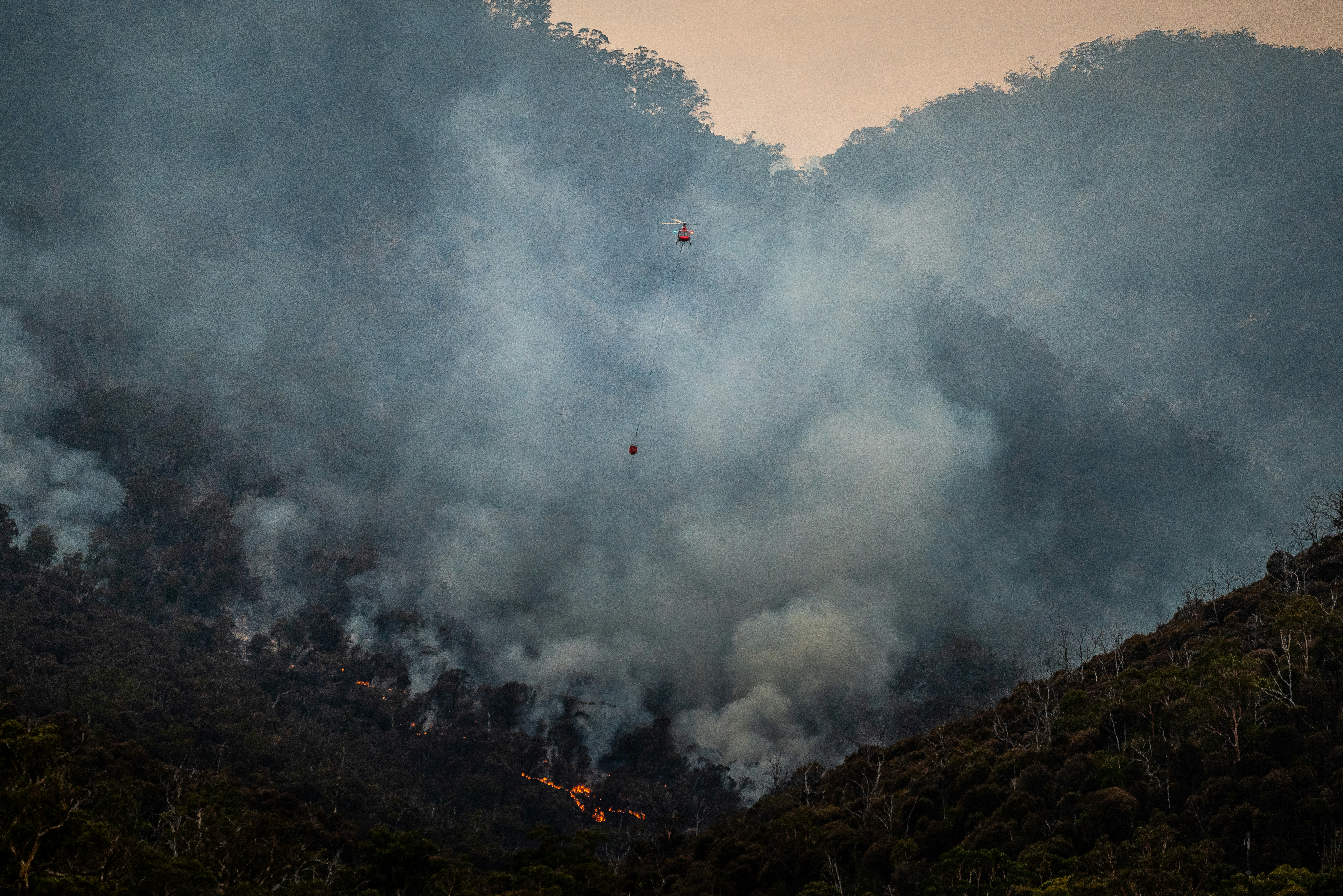Light absorption by black carbon in wildfire-driven storms
Submitter
Fast, Jerome D — Pacific Northwest National Laboratory
Area of research
Aerosol Processes
Journal Reference
Science
Pyrocumulonimbus (pyroCb) clouds form from wildfire-driven convection. PyroCb clouds contain large amounts of black carbon (BC) mixed with water and organics. BC particles have a large effect on our climate because they can absorb sunlight, but BC absorption depends on how it is mixed with other materials. Previously, the extent of BC mixing was assumed, and absorption properties were calculated based on these assumptions. This study used measurements of BC mixing to improve our understanding of BC light absorption in a pyroCb cloud and found that BC absorption reaches a maximum value—beyond which additional mixing does not increase absorption.
Impact
PyroCb clouds are increasing in frequency as large wildfires become more prevalent in a warming climate. PyroCb clouds can in some cases inject smoke particles into the upper troposphere and lower stratosphere, where they can remain suspended for several months. To understand how these particles influence Earth’s climate, how much light they absorb must be understood. Measurements of particles inside a pyroCb cloud were used in this study to quantify their absorption properties. This research uses some of the first observations of particles inside a pyroCb cloud to improve our understanding of how they absorb sunlight.
Summary
PyroCb clouds are a subset of cumulonimbus clouds that form via heat-driven convection driven by wildfires. Previous observations of pyroCb firestorm systems have shown that pyroCbs can inject significant amounts of BC-containing smoke to the stratosphere with a residence time of several months. A distinguishing feature of BC particles in pyroCb clouds is their thick surface coatings compared to BC from other sources. When coated with non-refractory materials, absorption by BC is enhanced, which is usually quantified by an enhancement factor (Eabs). Previous studies of absorption by BC in pyroCb clouds have relied on models that make simplifying assumptions about the thickness of coatings on BC particles.
In this study, direct measurements of coating thickness on BC particles in a pyroCb cloud were used to quantify Eabs. Eabs in a pyroCb cloud was higher than Eabs by BC from urban and wildfire sources. The results indicate that Eabs has an upper limit of 2—beyond which the addition of coatings does not increase absorption.


